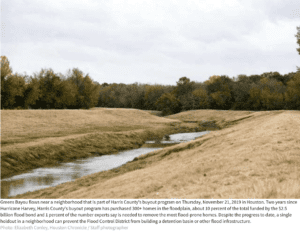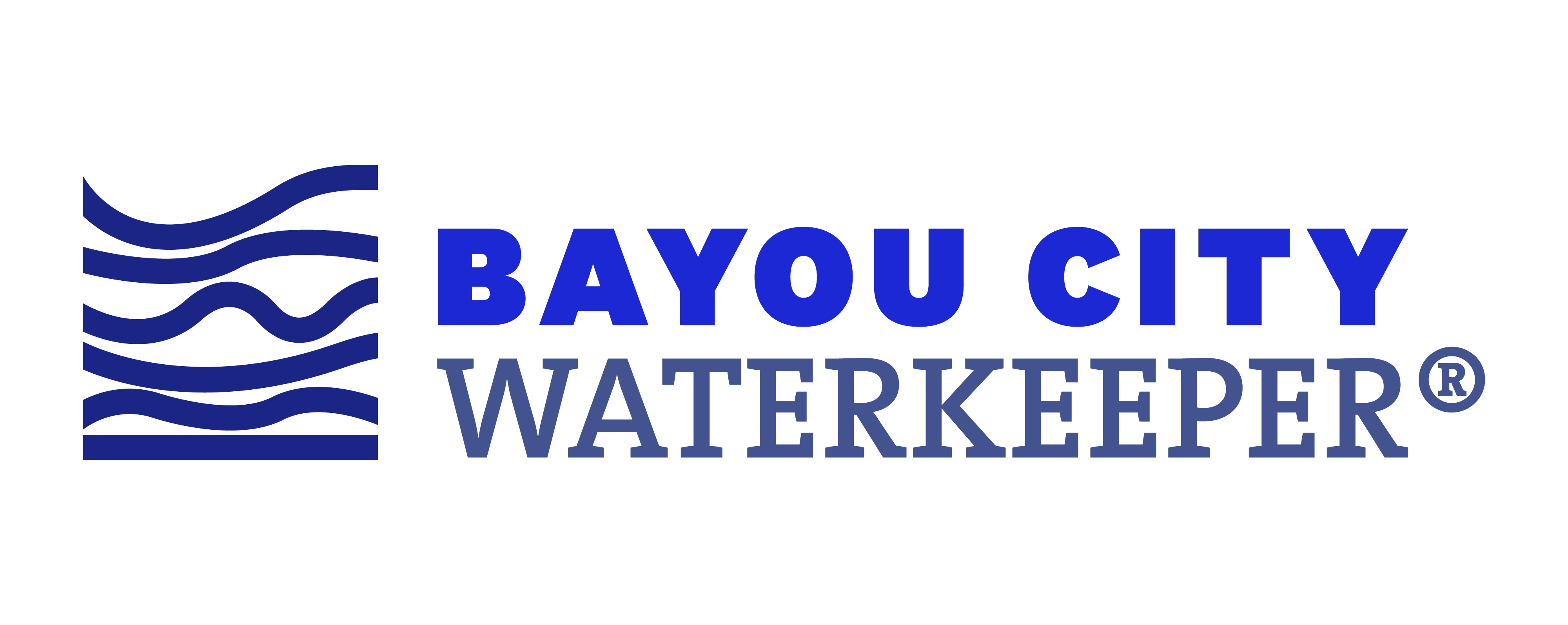[vc_row][vc_column][vc_column_text]This op-ed was published by the Houston Chronicle on Thursday, 6 August 2020, featuring Jordan Macha, Executive Director for Bayou City Waterkeeper, and Amanda Fuller, Director of Texas Coast and Water Program for National Wildlife Federation. See original post here.

Opinion: More concrete ditches and paved-over prairies? Houston must pivot to nature-based flood mitigation
By Amanda Fuller and Jordan Macha |
With damage already felt from Hurricane Hanna on the middle and lower Texas coast, and the potential for a devastating hurricane season upon us, the fear of a repeat Hurricane Harvey is top of mind for Houston-area residents and local elected leaders alike. However, many are unaware that leaders in the region have an unprecedented opportunity to set Houston and Harris County on a more resilient and equitable path when it comes to mitigating the impact of future flooding events. With long-standing conventional projects waiting in the wings, there is growing concern that the window for innovation is closing.
After Harvey, many scientific and technical expert groups were formed, reports commissioned, and the public was convened — all in search of solutions. A common theme emerged from all of these efforts: we can’t keep approaching flood mitigation in the same ways and expect a different result — the powerful role of the area’s natural systems, plus a focus on the equitable distribution of funds, must be part of the answer. Continued development in floodplains and reliance on outdated hard infrastructure, such as reservoirs and drainage channels alone, coupled with the paving over of the Katy Prairie, have proven to be a recipe for disaster as the impacts of climate change intensify in the region, especially in communities that have been underinvested in over time.
The good news is that billions of dollars for mitigation activities are pouring into the state by way of $4.3 billion from HUD’s Community Development Block Grant Mitigation Fund (CDBG-MIT), administered by the Texas General Land Office, which is taking applications until Oct. 28. That’s in addition to the opportunity to compete for hundreds of millions of dollars from FEMA’s new Building Resilient Infrastructure and Communities Program (BRIC), which will begin accepting grant applications this fall.
Two aspects of these programs highlight the unique opportunity in front of decision-makers. The CDBG-MIT fund requires that at least 50 percent of the funds benefit low- and moderate-income communities. Historically underserved neighborhoods, such as those in the Greens Bayou Watershed, were disproportionately impacted by Harvey, making this benchmark critical in beginning to address the city’s equity concerns related to flooding.
Guidance for each of these programs explicitly highlights the importance of nature-based approaches — an umbrella term referring to a wide range of practices that leverage or mimic existing natural features to mitigate the effects of hazards such as flooding. Examples include the preservation of open space, wetlands and riparian forests; restoration of bayous; and the use of living shorelines along our bays to prevent erosion.
The evidence is mounting that natural infrastructure works and is cost-effective — an acre of wetlands can typically store 1-1.5 million gallons of floodwaters, and in the Gulf region, every dollar spent on wetland restoration can yield more than $7 in flood reduction benefits. The Greater Houston Area Flood Mitigation Consortium made many such recommendations, noting where watersheds remain undeveloped, acquisition of land along the bayous and creeks is a cost-effective flood mitigation tool.
These approaches are taking root across the country. In Hoboken, N.J., for example, the Northwest Resiliency Park collects rainwater for lushly planted discovery gardens in an urban setting that help store and filter water while below ground up to a million gallons of runoff is collected, stored and filtered before being released to the Hudson River. Award-winning local green infrastructure projects like Clear Lake’s Exploration Green have demonstrated success in protecting homes from flooding while providing community benefits. Decision-makers should look to these examples as they develop and consider project applications.
Beyond the protective qualities of these approaches, natural infrastructure provides long-term and ongoing benefits to surrounding communities in ways that hardened structures simply cannot. Notably, the Harris Thrives Resolution, adopted by the Harris County Commissioner’s Court in 2019, clearly directs the Harris County Flood Control District to prioritize both nature-based and equitable approaches to flood mitigation.
Given this momentum, we urge the Harris County Flood Control District and the City of Houston to prioritize investments in the protection and restoration of assets, like prairies and wetlands to absorb and store flood waters, while centering the area’s most vulnerable and underserved. While some of the flood bond dollars are going to land acquisition along floodplains, buying up golf courses and removing properties from harm’s way, more needs to be done to heed the advice of national and local experts as well as repeated calls from affected communities.
We need to all learn from the lessons of Harvey and work in partnership with nature.
Fuller is director of the National Wildlife Federation’s Texas Coast and Water Program. Macha is the executive director of Bayou City Waterkeeper.
The views expressed here are supported and endorsed by the following organizations: Bayou Land Conservancy, Bayou Preservation Association, Galveston Bay Foundation, Houston Audubon, Katy Prairie Conservancy, and the Sierra Club – Lone Star Chapter.[/vc_column_text][/vc_column][/vc_row]
